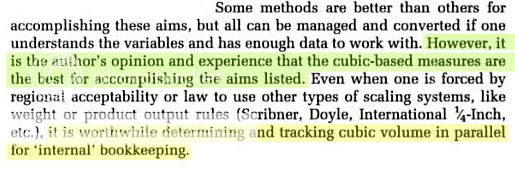Some of these folks have no idea how to scale a log. PDQDL is the only one on the right track.
I have owned a Woodmizer since 2003 and have cut over 100,000 bf of lumber. Forget the formula's, use a Scale Table instead. There are over 100 different log scales used in commerical trade, but only 3 are considered common, Doyle, Scribner and 1/4 International. Find out which one your mill uses, and then go online and print out the Table for that scale. Print out the rules for the scale as well. Most scales use the diameter inside the bark on the small end and the length in whole feet, ( no rounding up ) to get bf for a given log. There are deductions for defects such as rot and sweep (bend) among many others.
Scale up a load of logs to get a total and then compare your figure to the one the mill adds up. If your figure is within 5% of the mill figure then all is well. If your figure is a lot higher than the mill figure then ask the buyer where you went wrong in your scaling. ( At first, I suggest that you assume he is not cheating you, maybe you forgot to deduct for a defect.) Maybe use a marker to write your bf calculation on the end of each log. The buyer should be able to clearly explain why a log scales lower than you think it should. Make sure he understands that you are trying to learn how to properly scale a load. If he can't explain the difference or isn't willing to help you tune up your scaling skills a little, then maybe try looking for a different mill.
Rick





